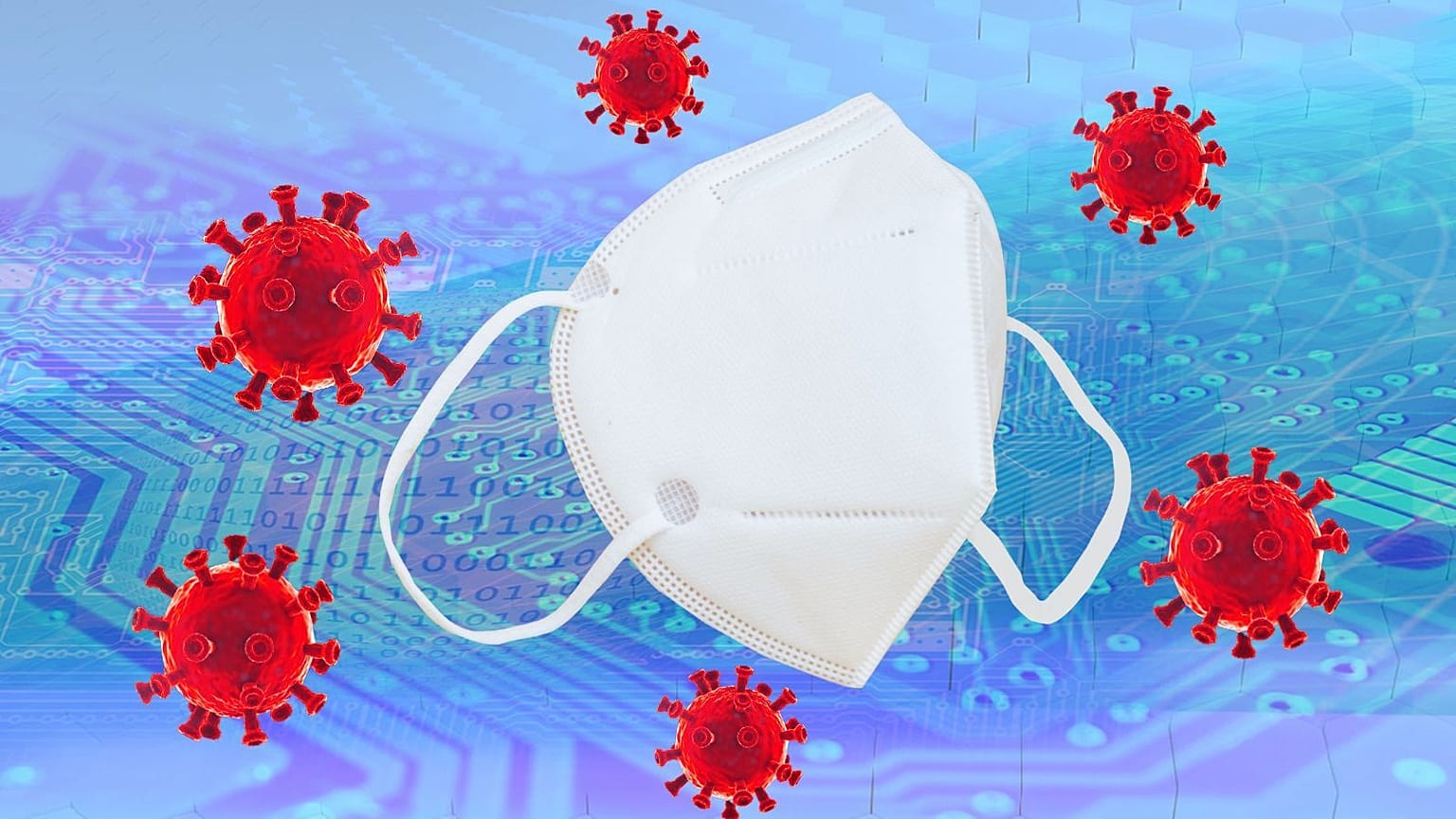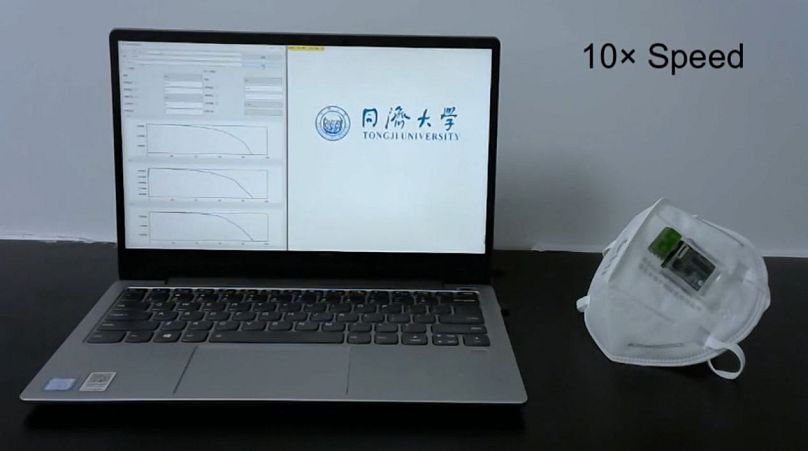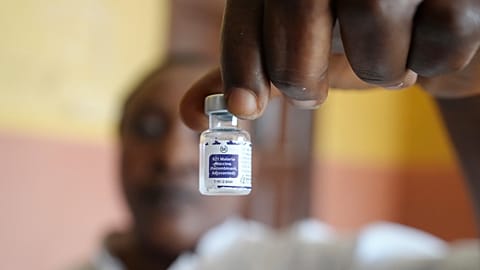Its developers say the smart mask would be especially useful in enclosed spaces like elevators.
Scientists have developed a face mask that can detect viruses in the air, including coronavirus and the flu.
The mask is able to detect the viruses even in ultra-low concentrations in liquid or gas.
It has been touted as an early warning system that could help to prevent outbreaks of several infectious diseases.
The mask is connected to electronic devices and its signals can be processed in real time, issuing a swift alert if a virus is detected.
“Previous research has shown face mask wearing can reduce the risk of spreading and contracting the disease,” said Yin Fang, a material scientist at Shanghai Tongji University, and a corresponding author of the study.
“So, we wanted to create a mask that can detect the presence of virus in the air and alert the wearer”.
He says the mask would work particularly well in enclosed spaces, which are known as higher-risk settings for transmission of viruses.
How does the mask work?
It can detect common respiratory viruses in the air in either droplets or aerosols, which is largely how diseases such as COVID-19 or H1N1 (also known as swine flu) are spread, when infected people talk, cough, or sneeze.
These viruses can remain suspended in the air for some time.
“Our mask would work really well in spaces with poor ventilation, such as elevators or enclosed rooms, where the risk of getting infected is high,” Fang said.
The team of scientists designed a small sensor with aptamers - a type of synthetic molecule that can identify unique proteins of pathogens like antibodies do.
They used three types of aptamers, which can recognise the surface proteins of SARS-CoV-2, H5N1, and H1N1.
A transistor on the mask’s sensor is triggered once the aptamers bind to the target proteins, sending an alert to the mask wearer’s phone within 10 minutes.
The scientists tested the mask in an enclosed chamber, spraying viral surface protein containing only trace-level amounts of the viruses onto the mask.
The sensor detected samples with as little as 0.3 microlitres of liquid containing viral proteins, which Fang said is from 70 to 560 times less than the volume of liquid produced in one sneeze - and much less than the volume produced by coughing or talking.
He added that if new respiratory viruses emerge, the mask could be easily updated to detect them.
“Doctors have been relying heavily on their experiences in diagnosing and treating diseases. But with richer data collected by wearable devices, disease diagnosis and treatment can become more precise,” Fang said.
His team hopes to shorten the detection time and increase the sensitivity of the sensor.
The findings were published in the journal Matter.



















